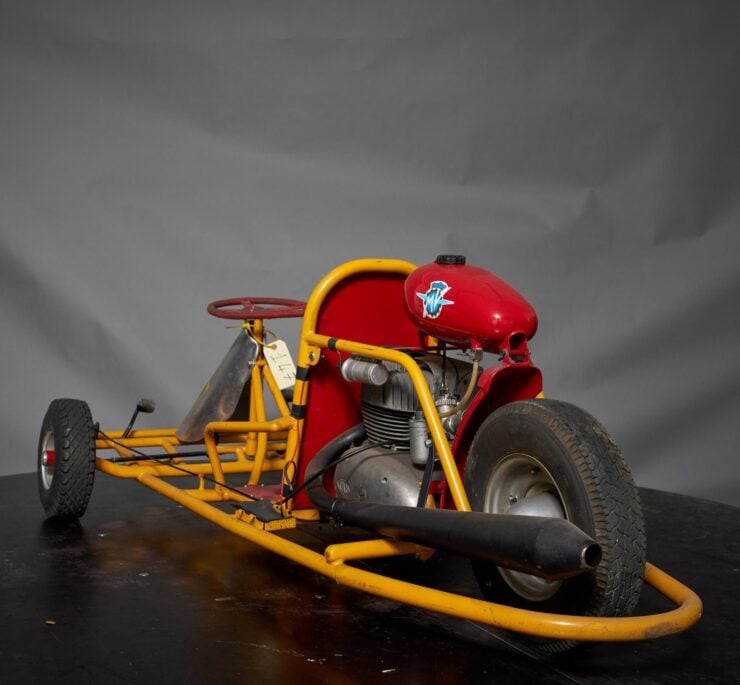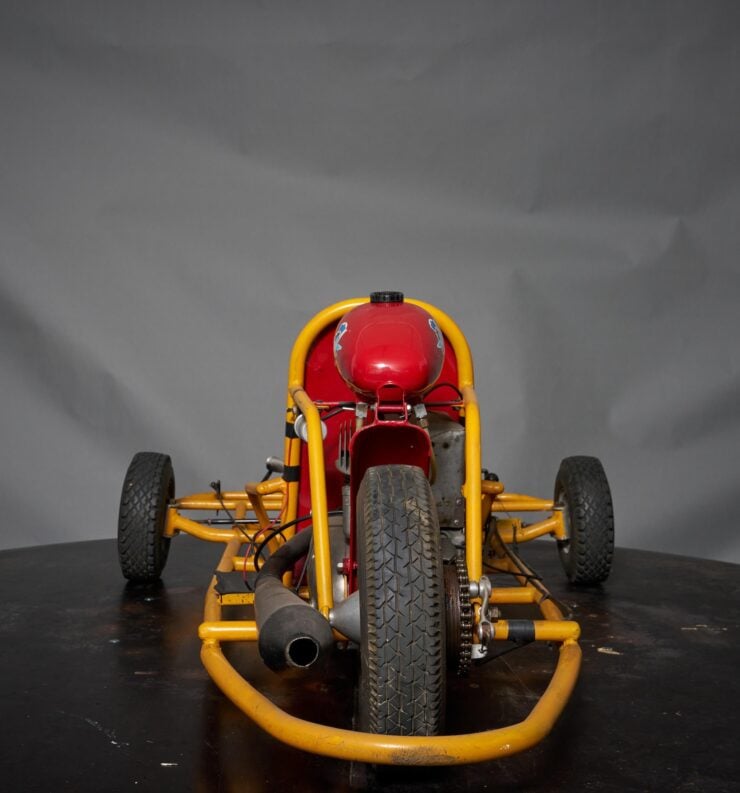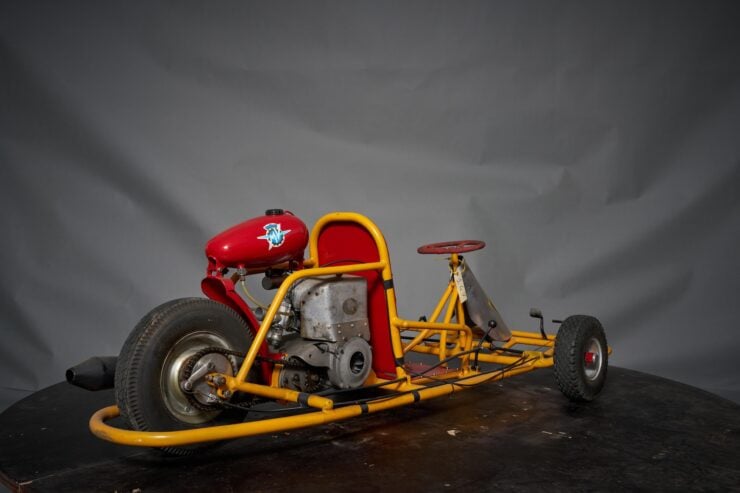This is a rare MV Agusta Go Kart from 1950, unusually it has a tricycle layout, it’s fitted with a motorcycle engine and chain drive to the single rear wheel.
While we have seen MV Agusta Go Karts come up for sale in the past, this is the first we’ve seen with less than the standard four wheels used by essentially all modern go karts.


MV Agusta: A History Speedrun
Founded in 1945 by Count Domenico Agusta, MV Agusta’s roots can be traced back to the Agusta Aviation Company, established by Domenico’s father, Giovanni Agusta.
After World War II, faced with a steep decline in the demand for aircraft, the company pivoted to a new market – motorcycles.
This may seem like a strange decision but the demand for smaller-capacity motorcycles for personal transportation in post-WWII Italy was huge, and many now famous companies were catering to it, including Ducati, Moto Guzzi, and Vespa.
In the picturesque setting of Cascina Costa, near Milan, the first MV Agusta motorcycle was born, the “98”, a modest though elegantly engineered little machine. This marked the beginning of a journey that would see MV Agusta become one of the most highly-regarded Italian motorcycle marques in history.
The 1950s and 1960s were golden years for MV Agusta as it utterly dominated the racing world. With legendary riders like John Surtees, Mike Hailwood, and Giacomo Agostini, MV Agusta amassed a staggering 37 World Championships and 270 Grand Prix victories, setting many records that stand to the present day.
MV Agusta’s story is not just about racing glory – their road bikes, known for their performance and high-end engineering, garnered a cult following around the world. Models like the MV Agusta F4, designed by the legendary Massimo Tamburini, were more than just motorcycles – they are considered by many to be works of art.
Despite all of this, the road was not always smooth for MV Agusta. The 1970s saw the company grappling with major financial difficulties, exacerbated by the shift in the motorcycle market, the runaway costs of maintaining a successful racing team, and the onslaught of cheaper Japanese motorcycles. The company ceased production in 1980, fortunately marking only a temporary end.
The MV Agusta name was revived in the late 1990s under new ownership, which sought to restore the brand’s legacy. The new millennium saw the introduction of models like the Brutale and the modern F4, bridging the gap between MV Agusta’s past and its future.
The MV Agusta Go Kart Shown Here
MV Agusta dabbled a little in the rapidly growing world of go karts in the 1950s and beyond. The company’s foray into karts made a lot of sense, they were already producing a line of 50cc – 125cc engines that were perfectly suited to karting use.
The kart shown here has a tubular steel chassis with two front wheels and a single wheel in the rear. The engine is mounted directly behind the seat, with a fuel tank over the 125cc air-cooled, single-cylinder engine that relies on a simple gravity feed down into the solo carburetor.
The pedal arrangement on this kart is a little unusual, the right-most pedal when viewed from the driver’s seat is the clutch, the pedal next to it is the rear brake, and the left-most pedal is the accelerator.


The kart is finished in yellow with red accents and it’s listed as having a year of manufacture of 1950, making it a very early example.
It’s now due to roll across the auction block with Bonhams as part of their Les Grandes Marques du Monde à Paris on the 1st of February with a price guide of €3,000 – €4,000, which works out to approximately $3,240 – $4,320 USD. If you’d like to read more about it or register to bid you can visit the listing here.





Images courtesy of Bonhams








